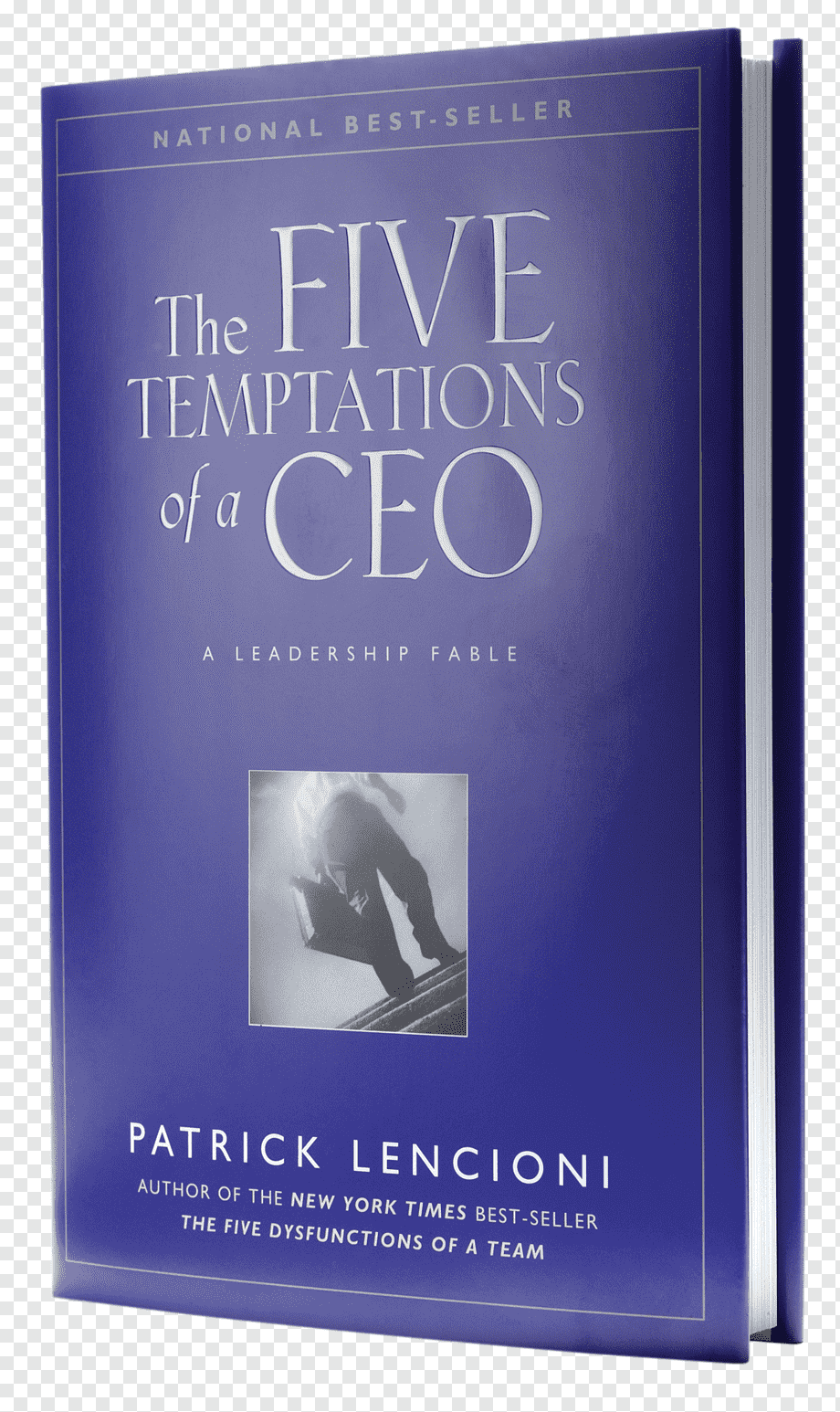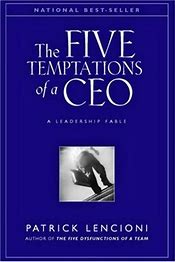Temptation

After reading The Ideal Team Player and the Five Dysfunctions of a Team, I decided to go back and re-read the original Lencioni text, The Five Temptations of a CEO. Now much more experienced, a little more humble, but even more determined to succeed, I was now an actual CEO, so I hoped that I’d get more out of the book.

Yep!
While the other books that I’d read caused me to consider the challenges and opportunities that our business and my colleagues may have, this one caused me to scrutinize only one thing – me – the CEO.
As I read the compelling parable of Andrew, the CEO of a Bay Area IT company, and the lessons that he learned from the “ghosts of CEO’s past” on the BART train, I was challenged to contemplate the things preventing me from becoming a good, or better, CEO.
Lencioni starts from the premise that being CEO is not complicated.
That’s a tough place to start. I’d guess that most would be committed to disagreeing with that idea. The pressure to deliver results, a changing corporate environment, the diverse constituents who deserve attention… technology, human resources, marketing and strategy related issues all fly in the face of this notion.
Lencioni does acknowledge that being CEO is a formidable challenge but contends that all of these operating challenges are but symptoms of the real problem. Rather, the author insinuates, CEO’s fail because of their unwillingness to face – and address – the Five Temptations of a CEO.
1. CEO’s can be driven by ego. Instead they should be overwhelmed with the desire to achieve something and maniacal about results.
2. CEO’s want to be popular with staff or direct reports. Instead they should be clear about what is expected of employees and hold them accountable.
3. CEO’s often want to ensure they are making the right decisions. It is better to decide with the information that you have and move forward. This is easier to do if you have a vision for where you want to go. (More about that in a future post.) CEO’s are challenged by this because it opens them up to being criticized. Yet, it’s the only way to achieve clarity. If you later get better data, you can always make another decision.
4. CEO’s frequently have a desire for harmony, while encouraging constructive conflict leads to making better decisions, improved buy-in and better results.
5. CEO’s don’t want to be vulnerable… When risking being wrong, trusting your teammates to do their jobs and setting a direction with imperfect information being vulnerable may be the best way to achieve stellar results.
As I mentioned, when reading this book, I was taking stock of myself – my own strengths and weaknesses.
In this instance I determined that I was at greatest risk for temptation #2 (and writing this down is part of facing it.) I like going to work, and I enjoy the people I work with. I’d like to consider many of them to be friends. This makes it harder to set clear expectations and even harder for me to be consistent in holding them accountable for performance.
If you have worked with me, or know me personally, you may have seen other temptations be more prominent. The Five Temptations, like elements of personality, are situational. Our strengths and weaknesses present in differing ways at various times. Maturing in life, and as a CEO, requires recognizing these attributes when you see them, improving when you can and determining when and how to use them appropriately to maximum effect.

Your staff and associates are very lucky to have you as their CEO!
Great critic. I need to pick up this one.